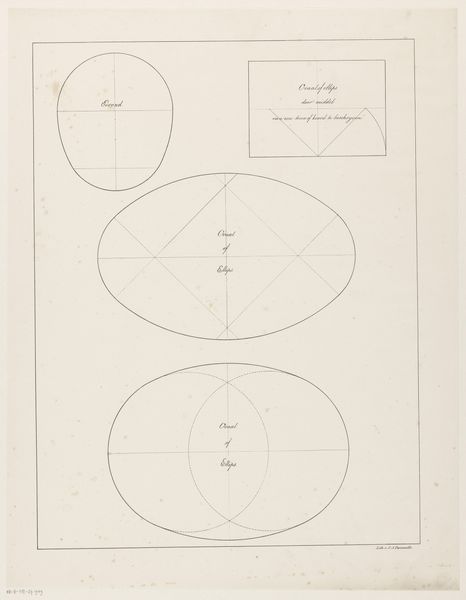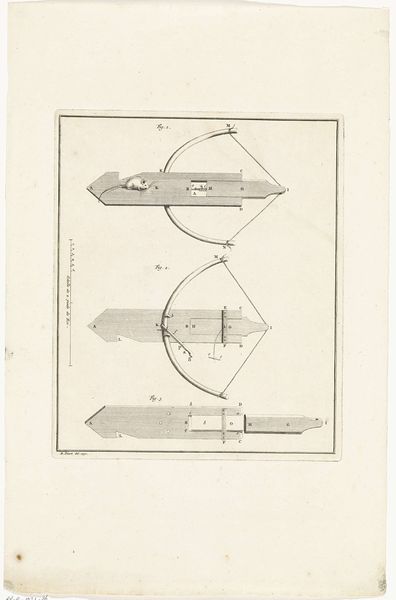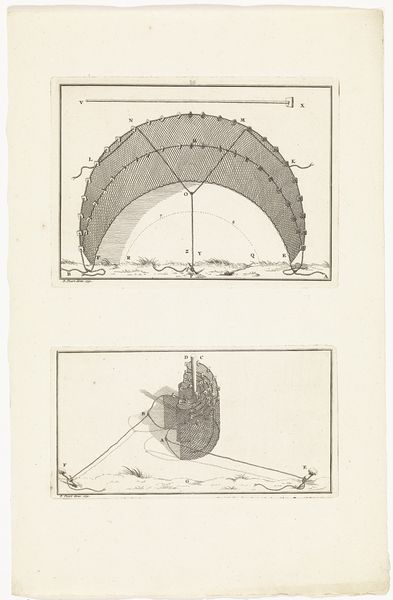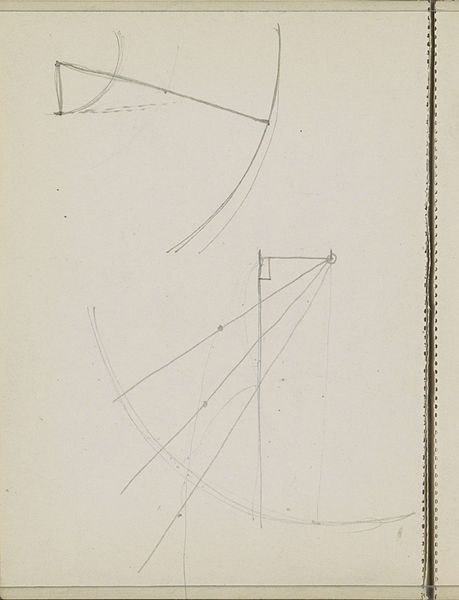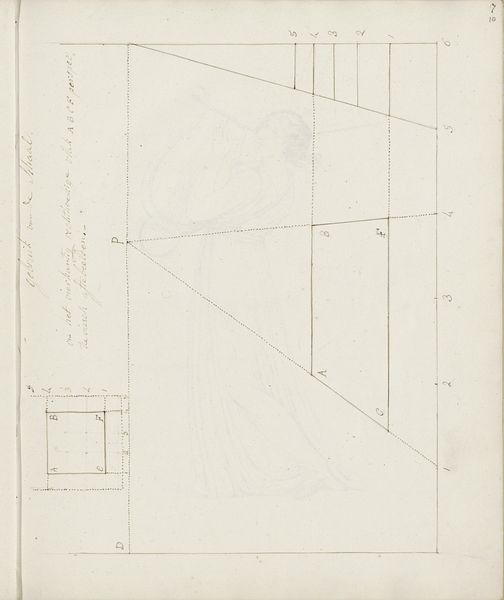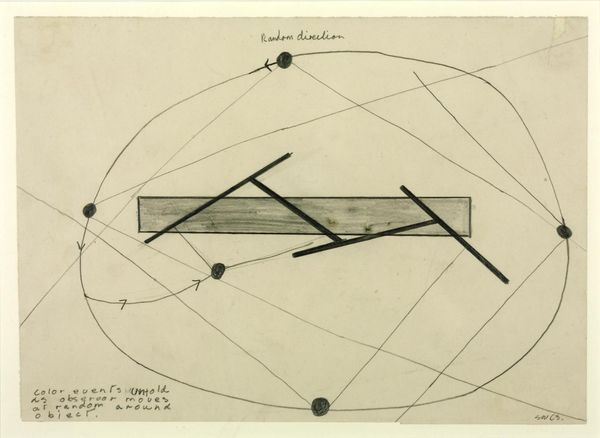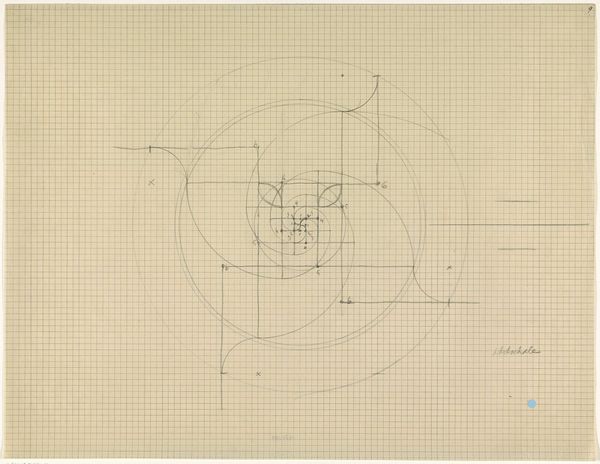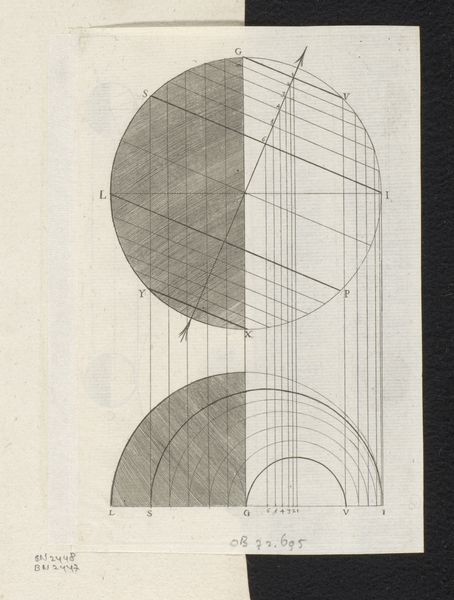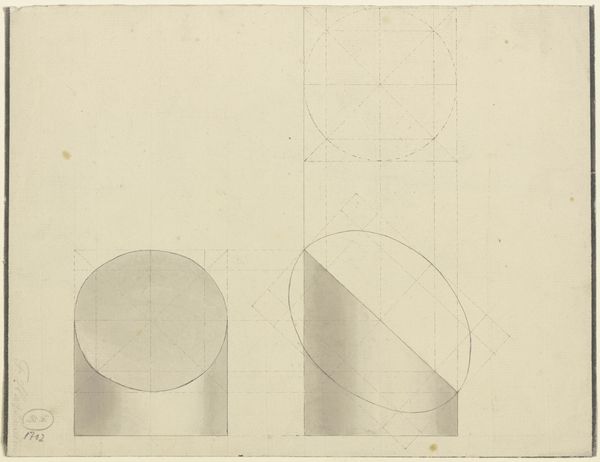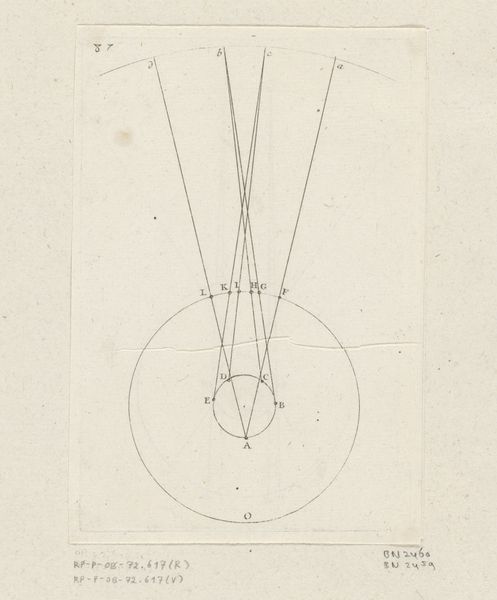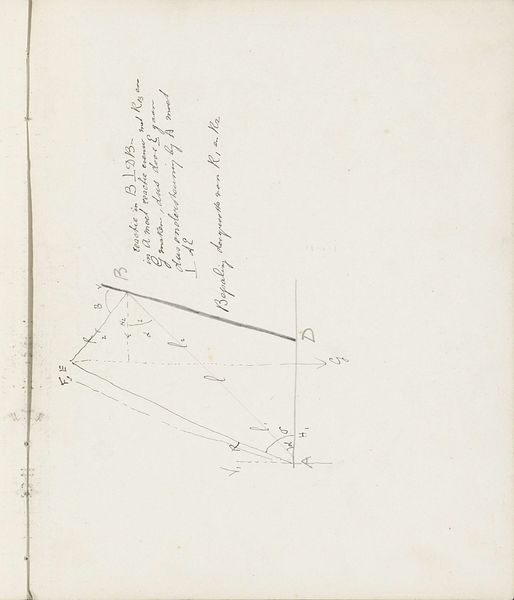
drawing
#
drawing
#
form
#
geometric
#
line
#
academic-art
Dimensions: sheet: 38.2 x 53.3 cm (15 1/16 x 21 in.)
Copyright: National Gallery of Art: CC0 1.0
Curator: This drawing, made around 1888 by John Marin, presents a methodical study of "Grecian Mouldings." It's intriguing to see such a practical, almost technical subject rendered as art. Editor: Immediately, I see these shapes as evocative symbols. Those curves, rendered with such precision, feel almost like ancient glyphs or the graceful outlines of stylized figures. Curator: It is interesting how he chose to represent these archetypal shapes. What truly strikes me is the intent behind this method of construction. Marin demonstrates here that even ornamentation has a process and rules; the shapes, for instance, seem born of intersections between geometry and material properties. Editor: True, and I feel a lingering presence of the classical world, perhaps its search for perfect forms and an order deeply embedded within the human psyche. I sense harmony and balance—fundamental principles echoing throughout our history and continuing even now. Curator: Consider the craft though—the making of moldings isn't some divine inspiration; it requires skillful shaping of materials like plaster or wood to meet exacting architectural needs. He reveals here the material choices and production possibilities in this academic rendering, not so different than looking at a blueprint in some respects. Editor: And aren’t these shapes laden with symbolism in themselves? The ovolo evokes fullness, life-force even; the cyma, with its wave-like undulation, represents transformation or transition. It's all tied to cycles, nature, eternal recurrences of cultural memories. Curator: But how much were these classical architectural forms influenced by production requirements? By constraints on what kinds of shapes could be physically and economically produced in various historical periods? How the physical limitations affect the symbolism you have talked about? Editor: It's true—we have an interplay of influences there. His composition gives the impression of geometry being an idealized framework that needs production limitations to reveal the final shape in a space, the real space where classical imagery makes itself known. It allows you to consider history from multiple perspectives, whether material and immediate or symbolic and allusive. Curator: Yes, indeed. This exploration, though seemingly technical, demonstrates Marin’s commitment to the groundwork of art. Editor: Absolutely; its blend of method and artistic expression helps us see the art, even in construction.
Comments
No comments
Be the first to comment and join the conversation on the ultimate creative platform.
